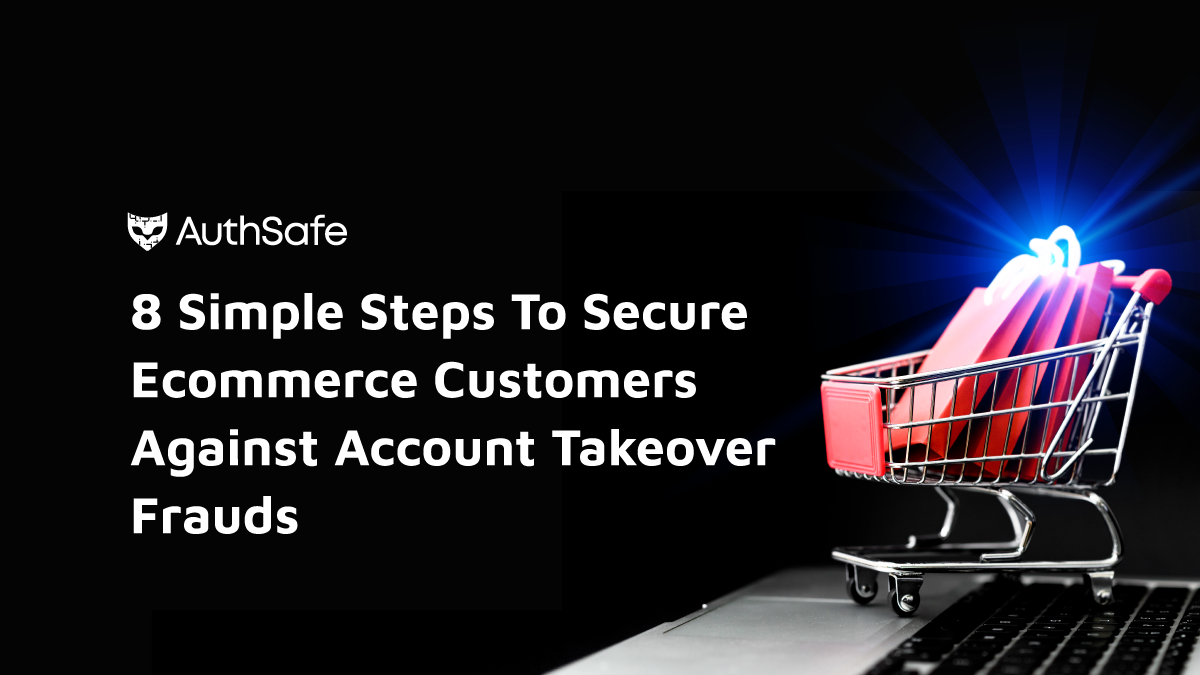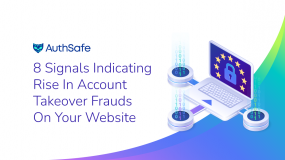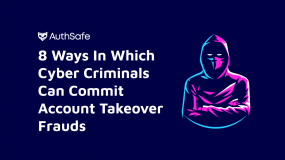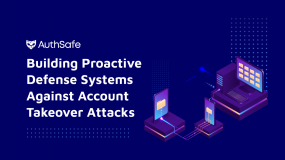
E-commerce account takeover frauds have become one of the most followed news from cyberspace in recent years. Such fraud is rampant for businesses, leading to operational challenges and customer trust issues. And it can even lead to mass protests by furious customers.
In fact, over 60% of ATO attacks target e-commerce accounts. Therefore, we must understand that e-commerce account takeover frauds occur at several levels. That’s why we need to set up an effective strategy to prevent account takeover vulnerabilities and protect e-commerce customers’ information.
What is e-commerce account takeover fraud
E-commerce Customer Account Takeover is the 21st-century version of the age-old practice of identity theft. Instead of mugging someone for their wallet, cybercriminals are hacking into unsuspecting customers’ online shopping accounts to steal their personal and financial information. It’s a digital heist that can happen in the blink of an eye, leaving victims feeling violated and helpless. But, as with any crime, there’s always a silver lining. The rise of E-commerce Customer Account Takeover has led to the development of more advanced security measures, making it harder for cybercriminals to carry out their dirty deeds. Let’s start.
1. Encourage strong and unique passwords
Strong passwords are the key to preventing account takeover frauds. A strong password is at least 12 characters in length. It combines upper- and lowercase letters, numbers, and symbols. It should not include easy-to-guess personal information like your pet’s name or the street you live on.
Unique passwords are also important because if someone can guess your password for one site, they might be able to use it to log into other sites.
For example: “I love my dog!” is not a very strong or secure password. It’s short, easy to remember, and has only one capital letter. A better option would be something like “I_love_my_dog#!.” This will still be more memorable than a randomized string of characters (and less likely to end up in an autofill dropdown). It’s much harder to crack than the first example.
Encourage customers to avoid using the same password across multiple accounts since in 60% of cases in which an account takeover occurs, the victim’s password is used on multiple platforms.
2. Enable two-factor authentication
Two-factor authentication (2FA) adds an extra layer of security by requiring users to provide a second form of authentication.
Two-factor authentication is a security measure that requires two separate identifiers to log in successfully to an account. The first identifier, or factor, is something the user knows (like a password). The user has the second factor (like a phone or device). When you enable 2FA for your ecommerce store, you can choose whether to require customers to enter an SMS code or a one-time passcode (OTP) when they log in.
Enable 2FA for all customer accounts. This means everyone who creates an account on your ecommerce platform will have to use 2FA to log into their account and buy from you.
3. Monitor for suspicious activity
Regularly monitor for suspicious activity on customer accounts, such as login attempts from unfamiliar locations or unexpected changes to account information.
This means looking out for changes in customer behavior, such as a sudden increase or decrease in spending or the number of orders placed. You can also monitor for unusual locations or IP addresses where transactions are being made (e.g., if a customer is making transactions from an unusual location).
4. Implement security measures to protect against phishing attacks
Phishing is one of the most common causes of account takeover. It occurs when an attacker sends fake emails that look like they’re from a legitimate provider, asking for personal information. The attacker then uses that information to access your account, make purchases, or change your password.
Use email authentication and anti-phishing tools to protect against phishing attacks, which can trick customers into giving away their login information.
5. Use SSL certificates
A Secure Sockets Layer (SSL) certificate is the standard to secure websites. While SSL certificates are not foolproof, they do provide a layer of protection against account takeover frauds. Secure Sockets Layer (SSL) certificates encrypt data transmitted between a website and a user’s browser, helping to protect against man-in-the-middle attacks.
Encryption makes it harder for attackers to intercept data and use it for nefarious purposes like account takeover.
6. Keep software and security protocols up to date
Keeping your software up to date is important to protect against attacks from hackers. Hackers tend to target outdated versions of software because they know that older versions are more likely to have security flaws that can be exploited. When you keep your software up-to-date, you’re protecting yourself from hackers who may try to exploit those vulnerabilities.
It’s also important to keep your security protocols up-to-date as well. Your e-commerce website should use the most recent version of SSL encryption, which can help protect against man-in-the-middle attacks such as cross-site scripting (XSS) and phishing attacks.
In a nutshell, regularly update software and security protocols to ensure that the latest security measures are in place.
7. Educate customers about online security
Provide customers with information and resources on how to protect themselves online, including tips on creating strong passwords and spotting phishing attacks.
Educating your customers about the importance of online security is an important step toward protecting their accounts against account takeover fraud.
You can even do this by providing them with a guide or video that explains how phishing works and why it’s important to be aware of any suspicious emails or websites they receive that could be used to steal their details.
8. Have a plan in place for responding to security breaches
As an e-commerce business, you are responsible for the safety and security of your customers’ data. That means you should have a plan to respond to security breaches quickly and effectively to minimize the impact on customers. This should include steps for identifying and containing the breach and communicating with affected customers.
It could include using firewalls and routers to limit access to sensitive areas of your network or Using intrusion detection systems to identify potential attacks on your network or any other possible ways.
Conclusion
Ensuring that an E-commerce website has strong security is vital to protecting everyone who uses your site, including yourself. You might think that account takeover frauds are something that only big sites like Amazon have to worry about, but smaller sites are also vulnerable.
All E-commerce sites have in common that they need to take the necessary precautions to protect the users—and their money—that they work so hard to protect. Get partner with us today and start protecting your e-commerce website from bot attacks.






